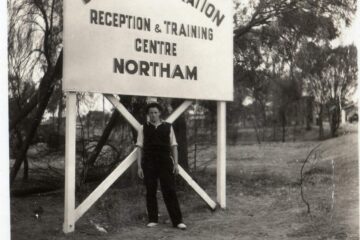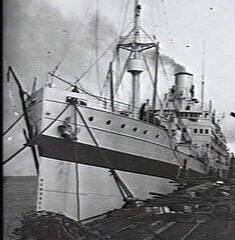In 2004, volunteers from the DACC undertook the first Dutch Immigrant’s Experiences (DIMEX) survey. This first survey aimed to investigate several aspects of Dutch emigration to Australia. Key topics covered by the survey included: main reasons for emigration; % house ownership, % naturalised as Australians, when and why; membership of clubs; active in Dutch community work; church affiliations; when did the post-war migrants of the 1950s and 1960s leave the Netherlands and why; and how did migrants travel to Australia. Altogether the DIMEX survey comprised 23 questions. A total of 1,950 questionnaires were distributed, with 307 responses received. This research was made possible by a major grant provided by the industrialist Gijs Kommer.
In 2011 further work was done with the material by DACC staff to make it more available digitally. Additional work was done in 2018 by gathering information about post-1990s Dutch migrants (this group was called DIMEX 2), a much smaller number. These later migrants were motivated to emigrate for different reasons, often spoke English reasonably well, had higher expectations of life in Australia, and often had good educational qualifications. They arrived in a different Australia as compared to the country that migrants of the 1950s arrived in. By the 1990s, multiculturalism had become a mostly positive reality of life in Australia. Interestingly, several of the DIMEX 2 migrants had travelled in Australia as tourists before deciding to migrate permanently.
The early, DIMEX 1 research shows that the early post-war Dutch migrants found work in a very wide variety of jobs. Many had two or three careers in different branches of industry, showing great adaptability to changing circumstances.
What the DIMEX research does not show is why many of the immediate post-war migrants returned to the Netherlands. By the beginning of the 1970s, approximately one third of the Dutch post-war migrants had returned to the Netherlands, apparently one the highest return rates of European migrants. Their views are not captured in the DIMEX 1 survey. A number of reasons have been suggested for the trend of return migration: economic recovery in the Netherlands/Europe, lack of recognition of Dutch trade and other qualifications in Australia, disappointment by some women with what was experienced as lack of social acceptance as migrants, and the gradually disappearing threat of a third World War. No specific research on return migration has been undertaken by the DACC, but awareness of this reality colours the findings of course and should be kept in mind.
The DIMEX research also does not show the experiences of Dutch expats, that is people of Dutch nationality who are employed by mostly Dutch multi-national companies in Australia. These are people who are employed on a contractual basis and live in Australia temporarily. A request to the Dutch Embassy to provide details of expat numbers, suggests no records relating to expats are kept. However, some DACC members are connected with Dutch expats in Australia and some are members of Clubs formed by expats, for instance Dutch Link. Some expats actually become migrants and stay in Australia with their families.
Below are the results of the DIMEX survey.


